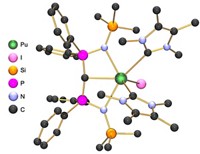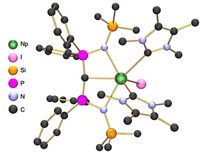Advertisement
Grab your lab coat. Let's get started
Welcome!
Welcome!
Create an account below to get 6 C&EN articles per month, receive newsletters and more - all free.
It seems this is your first time logging in online. Please enter the following information to continue.
As an ACS member you automatically get access to this site. All we need is few more details to create your reading experience.
Not you? Sign in with a different account.
Not you? Sign in with a different account.
ERROR 1
ERROR 1
ERROR 2
ERROR 2
ERROR 2
ERROR 2
ERROR 2
Password and Confirm password must match.
If you have an ACS member number, please enter it here so we can link this account to your membership. (optional)
ERROR 2
ACS values your privacy. By submitting your information, you are gaining access to C&EN and subscribing to our weekly newsletter. We use the information you provide to make your reading experience better, and we will never sell your data to third party members.
Computational Chemistry
Caged actinides form unusual bonds in simulations
Questions remain about whether these bonds could be made experimentally
by Sam Lemonick
September 3, 2020
| A version of this story appeared in
Volume 98, Issue 34

Computational chemists predict that actinide elements trapped in fullerene cages will form some unusual metal-metal bonds, including very long covalent bonds and π bonds without accompanying σ bonds (Inorg. Chem. 2020, DOI: 10.1021/acs.inorgchem.0c01713).
Scientists know of just a few actinide-actinide bonds, including gas-phase U2 and Th2, and U2 inside an 80-carbon fullerene cage. Cina Foroutan-Nejad of Masaryk University,Adam Jaroš of Charles University and Michal Straka of the Czech Academy of Sciences used density functional theory calculations to predict other actinide bonds that could form in fullerene. They modeled bonds between the elements from Ac to Cm inside C70, C80, and C90 fullerenes. The researchers found the cages encourage bonding not just by bringing the atoms close together, but also because bonds between the cage and the actinides improve the electronic conditions for actinide-actinide bonding. Plutonium proved the most interesting system, forming banana-shaped σ bonds in C70 fullerenes, two π bonds without a σ bond in C80, and a 5.93 Å bond in C90, which would be a record-long metal-metal covalent bond.
These bonds remain theoretical for now, and experts say it’s hard to assess the group’s predictions without experimental evidence. The researchers say they don’t have the ability to synthesize these complexes, although other groups are working on making similar systems.
Computational chemists want to see more sophisticated modeling. Laura Gagliardi of the University of Chicago says the calculations should include accounting for electron correlation and relativistic effects in a more comprehensive way. Straka doesn’t think those effects are likely to change their results. And he says the group found more advanced computations were impractical on systems with so many atoms.
Straka hopes they can model similar two-element actinide bonds soon. But the researchers say that, in addition to their interesting bonds, actinide-fullerene systems might prove useful as switches, spin filters, or magnets in advanced electronics. Foroutan-Nejad says the group is working on a hypothetical “Swiss Army knife” molecular device.
Update
This story was updated on Sept. 4, 2020, to clarify Laura Gagliardi's comments about the need to improve the way electron correlation and relativistic effects are taken into account when modeling these systems.





Join the conversation
Contact the reporter
Submit a Letter to the Editor for publication
Engage with us on Twitter